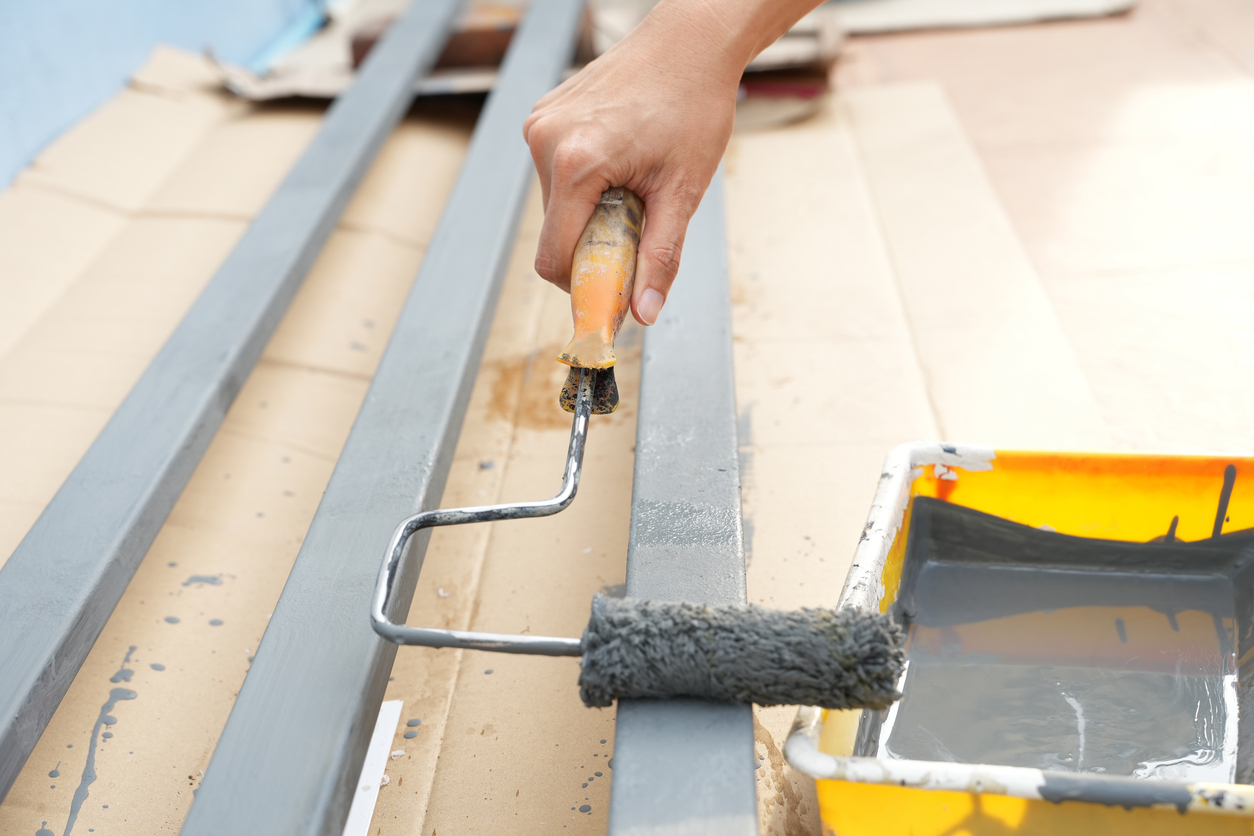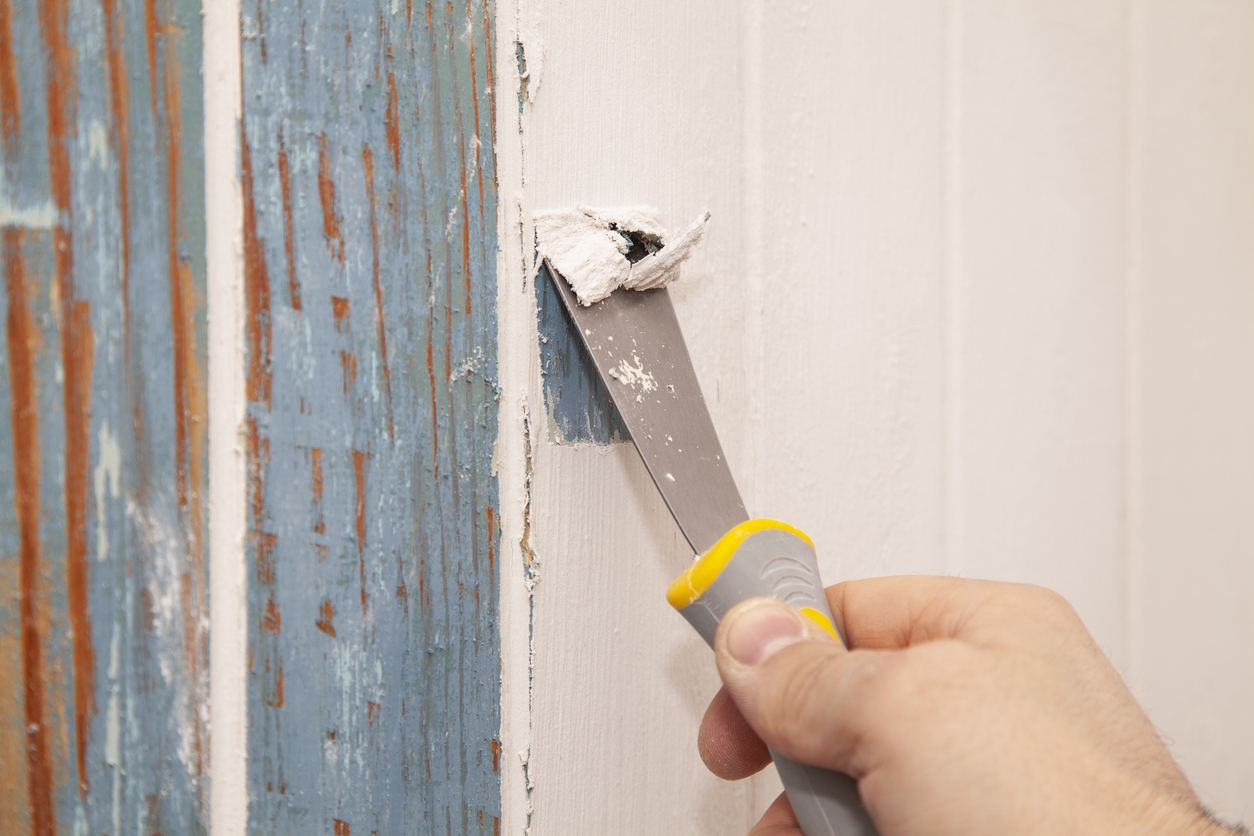Removing old paint from metal surfaces is crucial for achieving a smooth and durable finish when repainting. It ensures the new paint adheres well to the surface, preventing issues like uneven texture and premature peeling. Painting over old or flaking paint can lead to poor adhesion, resulting in a rough surface, bubbles, and peeling soon after the paint job is completed.
Using professional techniques for paint removal, such as sanding, scraping, or chemical stripping, ensures a thorough and effective process, providing a clean base for the new paint. This approach enhances the quality and longevity of the paint job, ensuring optimal results that stand the test of time.
Why removing old paint from metal is essential
Removing old paint from metal is essential for several reasons:
- Surface preparation: Clean, bare metal is crucial for the new paint to adhere properly, ensuring better bonding and a longer-lasting finish. Improve paint adhesion and restore exterior surfaces by scheduling our professional power washing service.
- Rust prevention: Removing old paint allows you to inspect for rust and treat any spots that could worsen over time if left unaddressed.
- Smooth finish: A clean surface helps achieve a smooth, professional finish without imperfections like bubbles, cracks, or inconsistencies.
- Durability and longevity: Proper preparation enhances the durability of the new paint, reducing the chances of future peeling or chipping.
Assessing the condition of the metal surface
The degree of paint removal needed
To determine whether partial or complete paint removal is necessary, inspect the surface for peeling, cracking, or blistering paint. If the old paint is generally intact, with only minor imperfections, partial removal and sanding of the affected areas may be sufficient.
However, if there is widespread damage, such as bubbling or flaking, it may be necessary to remove all old paint layers to achieve a smooth, clean surface for the new paint to adhere properly.
Identifying rust and corrosion
Examine the metal surface for signs of rust or corrosion, particularly where the paint has cracked, chipped, or blistered. Rust spots may appear as brownish-red discoloration or bubbling under the paint.
It is crucial to treat rust spots before repainting because painting over rust can cause further deterioration, compromising the durability of the new paint job. Rust removal can involve sanding, wire brushing, or using chemical rust converters.
Mechanical methods for paint removal
1. Sanding:
- Manual sanding: Suitable for small or delicate surfaces, using medium to fine-grit sandpaper to remove paint.
- Power sanders: Orbital or belt sanders are effective for larger surfaces, quickly removing multiple layers of paint.
- Advantages: It provides a smooth surface ready for priming and painting but can be time-consuming and labor-intensive.
2. Wire brushes:
- Hand wire brushes: Ideal for scraping off loose paint in corners or textured areas.
- Wire brush attachments: Faster removal for large areas when attached to a drill.
- Pros and cons: Efficient for flaking paint, but improper use may scratch the metal surface.
3. Grinders:
- Angle grinders: Effective for removing thick layers of paint and rust from heavily coated or rusted surfaces.
- Safety considerations: They require protective gear and caution to avoid damaging the metal surface.
Chemical paint strippers
1. Gel or paste paint strippers:
- Application: Gel-based strippers are ideal for vertical or horizontal metal surfaces. They cling well without dripping, allowing thorough coverage and penetration to loosen old paint.
- Effectiveness: They are highly effective at removing multiple layers of paint, including on intricate or textured metal surfaces, making them suitable for detailed work.
- Safety precautions: It is crucial to wear gloves and goggles and ensure proper ventilation to minimize exposure to potentially harmful chemicals.
2. Eco-friendly paint strippers:
- Low-VOC options: These strippers offer a safer alternative with reduced volatile organic compounds (VOCs), minimizing harmful fumes and environmental impact.
- Longer application time: While they are safer, eco-friendly paint strippers typically require a longer time to effectively break down paint layers, especially in indoor or heavily populated settings.
- Neutralizing the surface: After using chemical paint strippers, it’s essential to clean and neutralize the metal surface properly to remove any residue and ensure it is ready for new paint application.
Heat methods for paint removal
1. Heat guns:
- How it works: A heat gun generates hot air to soften old paint on metal surfaces, making it easier to scrape off with a putty knife or scraper.
- Best applications: Ideal for removing paint from detailed areas, thick paint layers, and large, flat surfaces like doors or metal furniture.
- Safety tips: Wear protective gloves, goggles, and a mask. Keep the heat gun in motion to prevent overheating and warping the metal. It is also best to avoid using the heat gun near materials that are flammable.
2. Blowtorches:
- Advanced technique: Blowtorches provide intense heat to quickly remove thick paint layers from metal surfaces, but they require skilled handling to avoid damaging the metal.
- Safety concerns: There is a high risk of fire. Use caution to prevent overheating and warping of the metal. Always work in a well-ventilated area and have fire extinguishing equipment nearby.
Abrasive blasting (sandblasting and alternatives)
1. Sandblasting:
- High-efficiency removal: Sandblasting uses high-pressure air to propel abrasive particles, effectively removing paint and rust from large metal surfaces. It works quickly and is highly efficient for extensive or heavily corroded areas.
- Professional technique: The method requires professional-grade equipment and expertise to avoid damaging more delicate metal surfaces, as excessive pressure or improper technique can cause pitting or warping.
- Environmental considerations: Generates a significant amount of dust and debris, necessitating proper dust control measures and responsible disposal of the blasted material to minimize the environmental impact.
2. Alternatives to sandblasting:
- Soda blasting: Uses sodium bicarbonate particles, which are less abrasive, making it a gentler option for removing paint from sensitive metal surfaces without causing damage.
- Dry ice blasting: Employs dry ice pellets that sublimate upon impact, removing paint without producing secondary waste, making it an eco-friendly choice that leaves no residue behind.
After paint removal: preparing metal surfaces for repainting
1. Surface cleaning
After removing the old paint, it’s crucial to thoroughly clean the metal surface to remove any remaining dust, debris, or chemical residues. Start by wiping the surface with a clean, dry cloth to remove loose particles.
Then, use a degreaser or a solution of water and mild detergent to eliminate any oil, grease, or contaminants. Rinse with clean water and dry the surface completely. For a final touch, wipe the metal with a solvent like acetone to ensure no residue remains that could affect the adhesion of primers or paints.
2. Rust treatment and prevention
After cleaning, inspect the metal for any signs of rust. Even minor rust spots can lead to further corrosion if not treated. Apply a rust converter or inhibitor to neutralize any rust that may still be present.
This step is crucial as it forms a protective barrier against future rust formation. Additionally, using a rust-inhibiting primer further protects the metal surface and enhances paint adhesion.
3. Priming the surface
Applying a high-quality metal primer is essential before painting. The primer acts as a bonding agent, ensuring better adhesion of the topcoat to the metal surface. It also provides a uniform base for the paint, enhancing the final appearance and durability.
Choose a primer specifically designed for metal surfaces and ensure it’s compatible with the type of paint you plan to use. Allow the primer to dry thoroughly, following the manufacturer’s instructions before applying the topcoat.
Why hire a professional for paint removal
Hiring a professional painter for paint removal from metal surfaces is beneficial due to:
- Expertise and precision: Professionals know how to choose the right paint removal method for metal surfaces, ensuring high-quality results without damaging the material.
- Access to specialized equipment: They come equipped with the proper tools and equipment needed for safe, effective, and efficient paint removal, especially for complex or large-scale projects.
- Time and safety considerations: Professionals complete the job quickly and safely, minimizing the risk of injury or damage to the surface, thus saving time and potential costs for repairs.
Conclusion
Thorough paint removal is crucial for achieving a long-lasting, smooth finish on metal surfaces. It ensures proper adhesion of new paint and prevents future peeling or flaking.
Homeowners and businesses should consult with Custom Painting Inc.’s paint experts for safe, efficient, and effective paint removal and repainting services. Serving the Bay area including the cities of Concord, Danville, Diablo, Dublin and Fremont.
Contact us today at 925-294-8062 or our contact page for expert advice and assistance with your next metal painting project!



